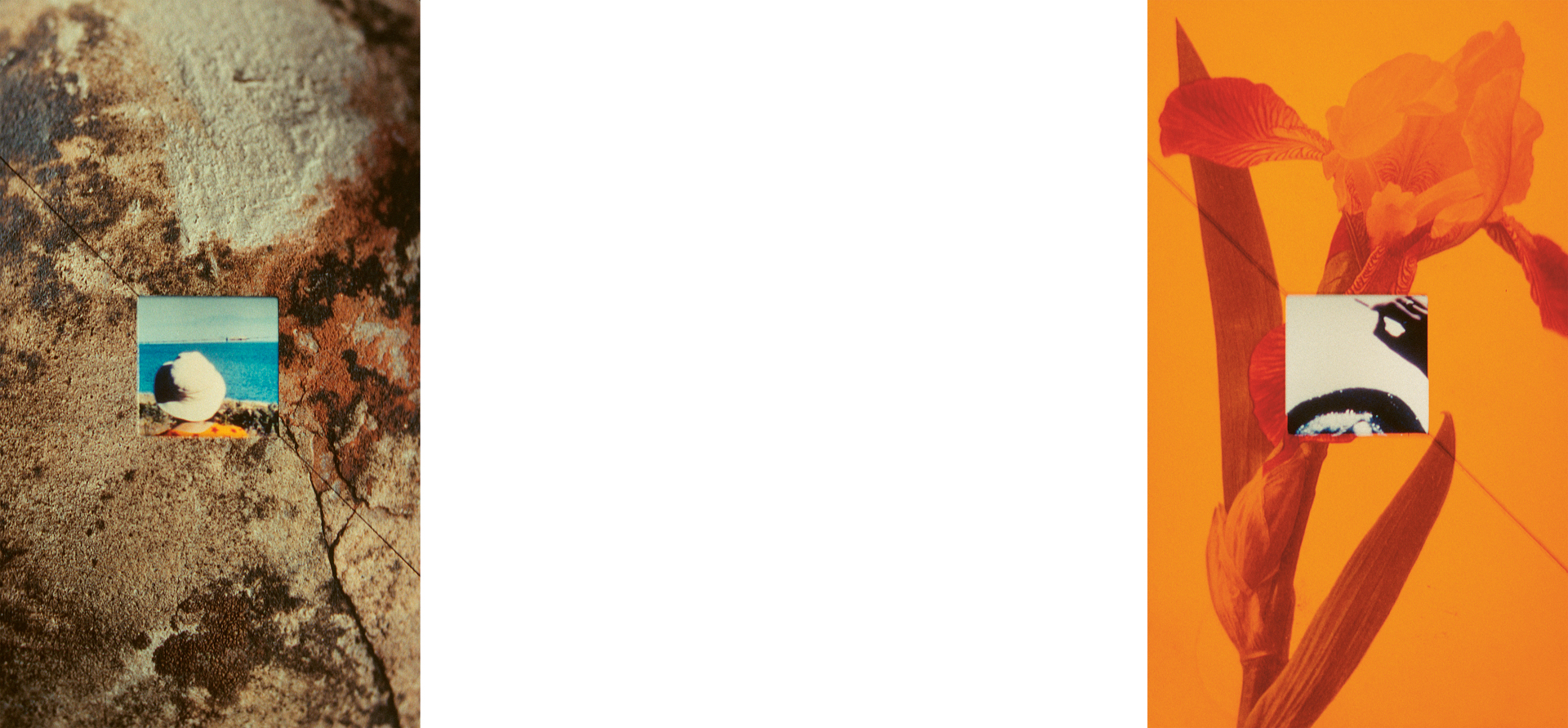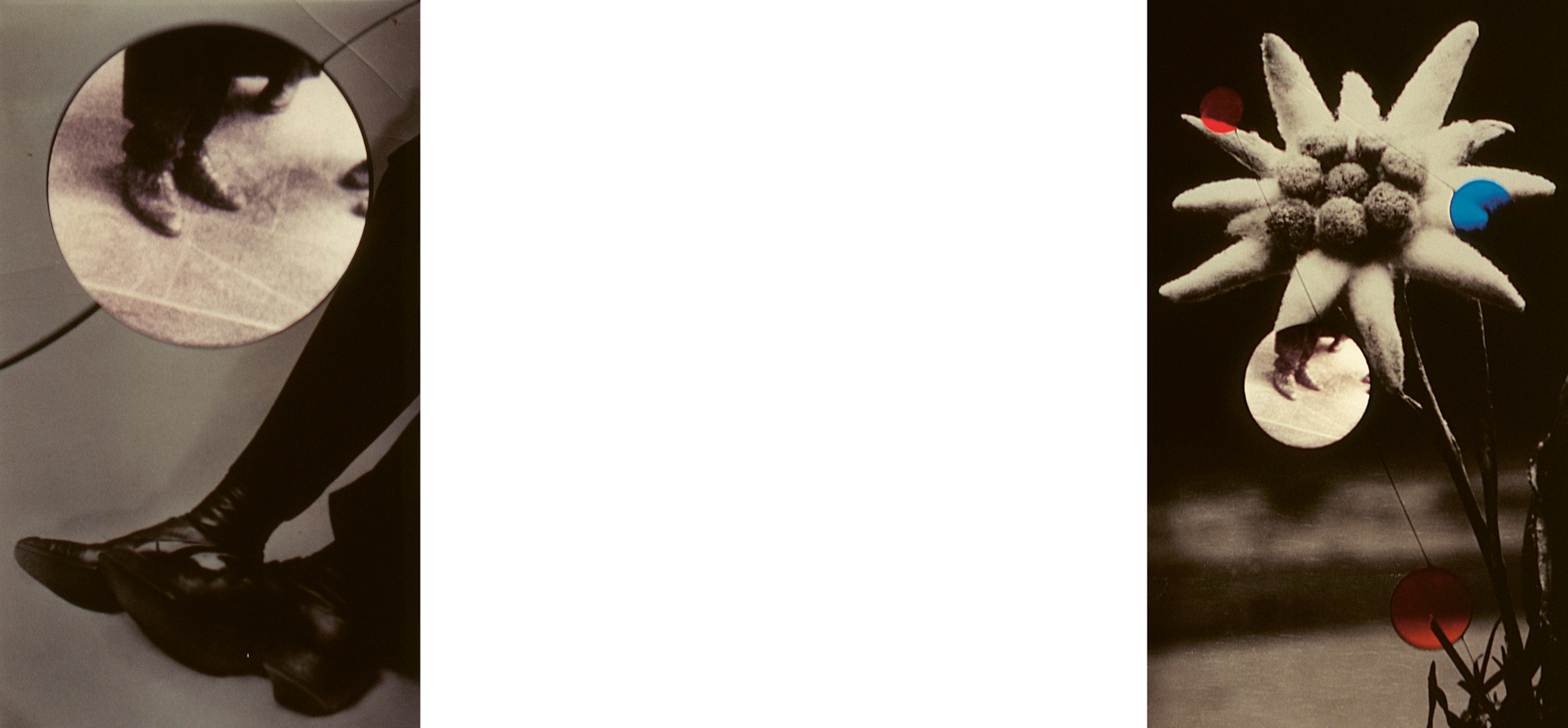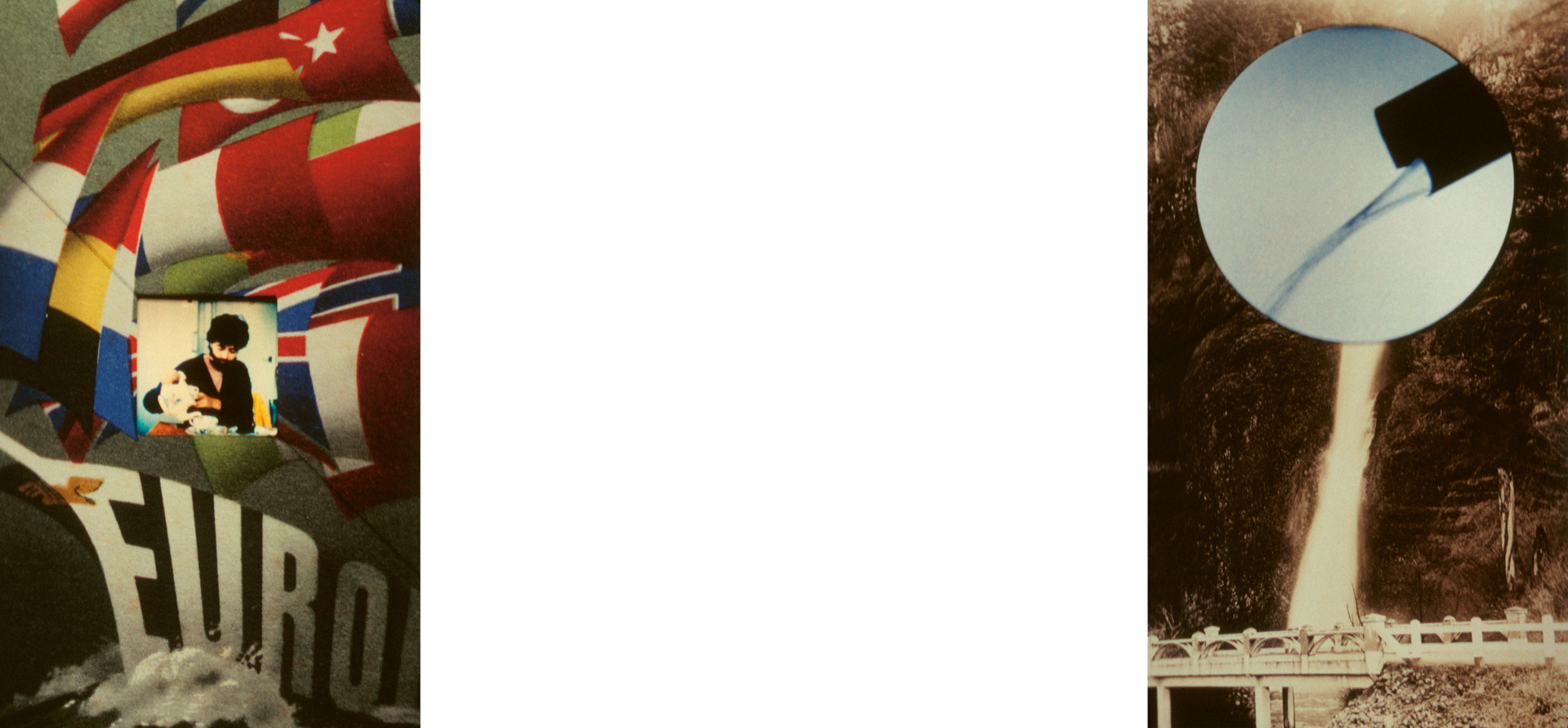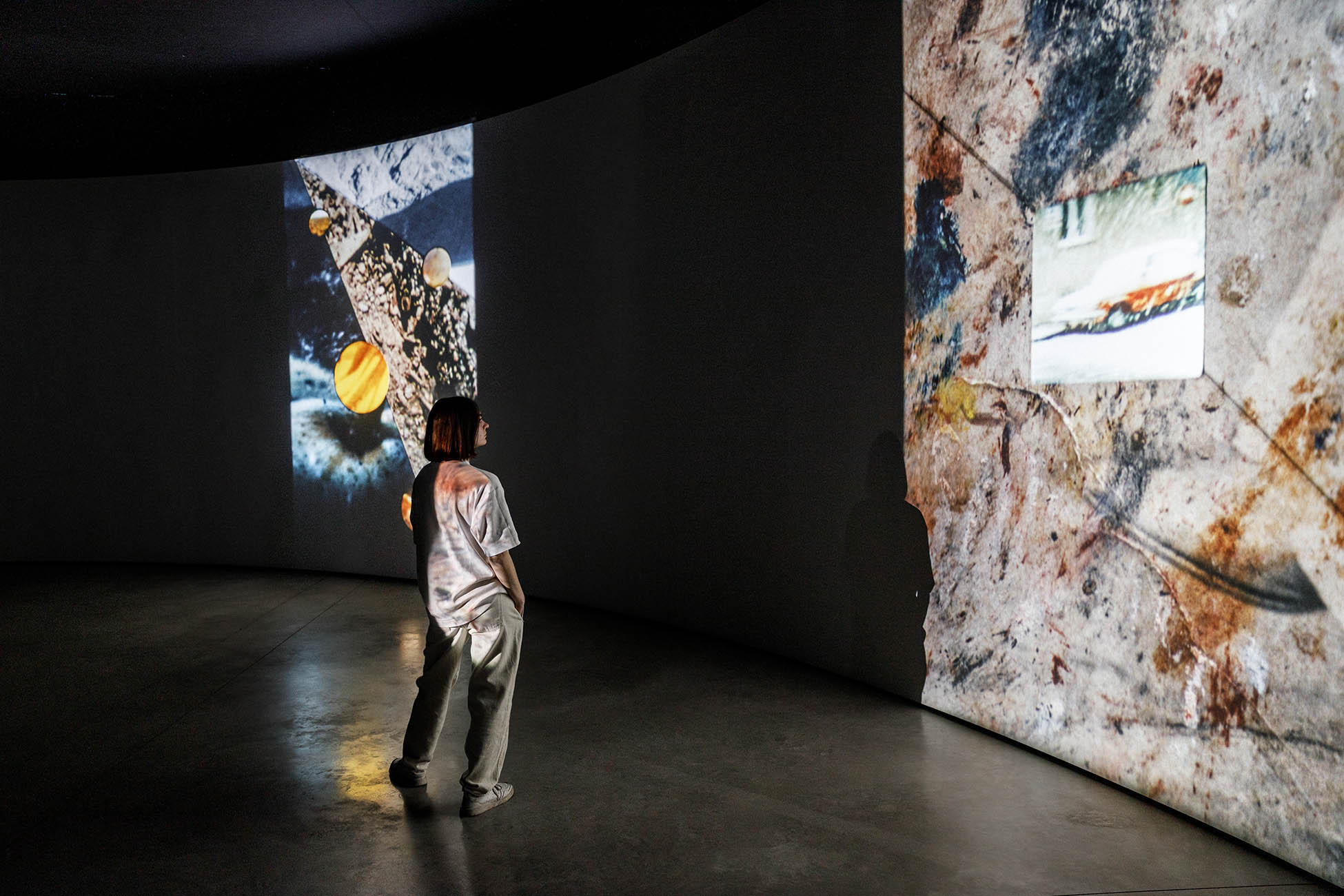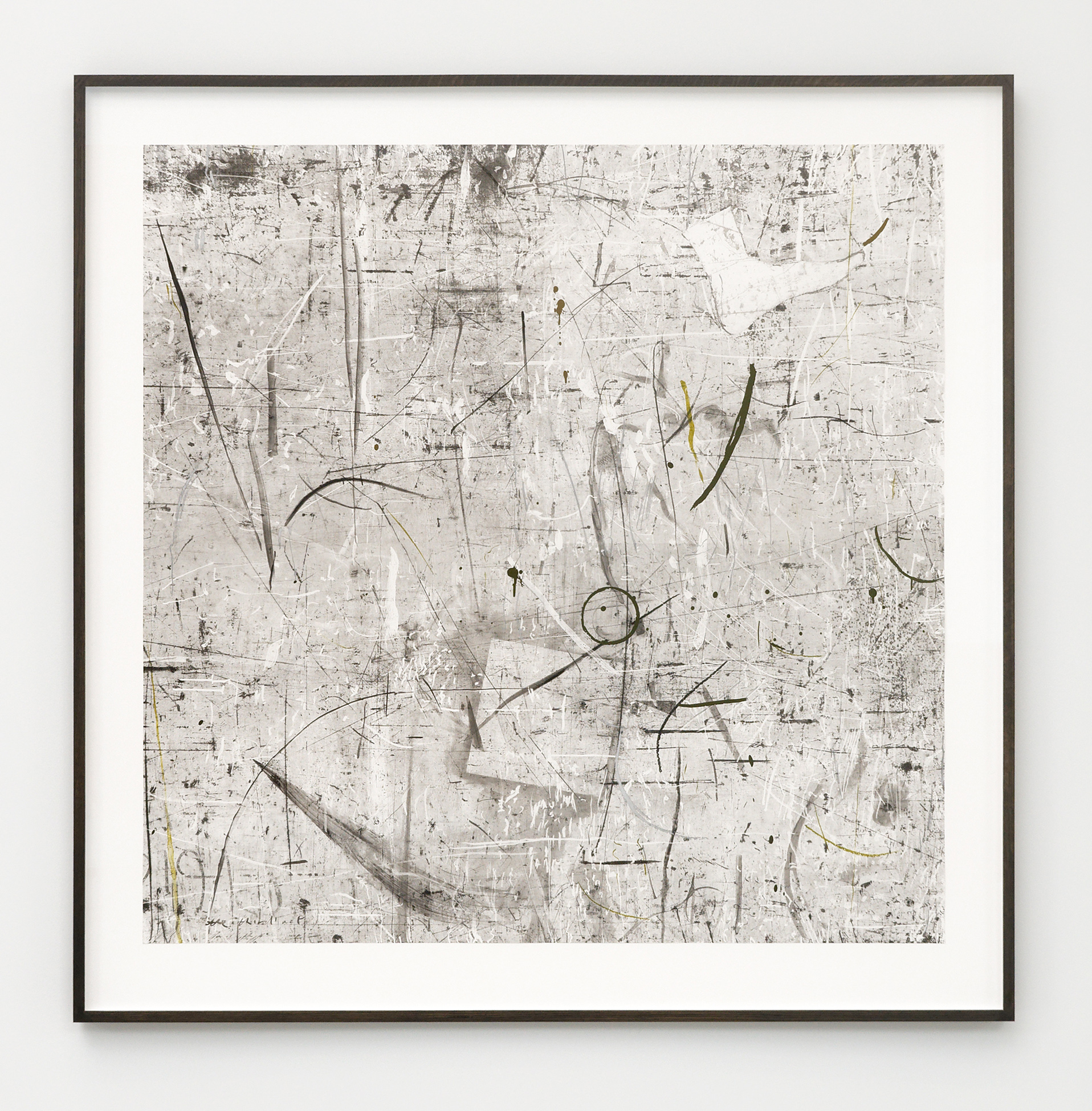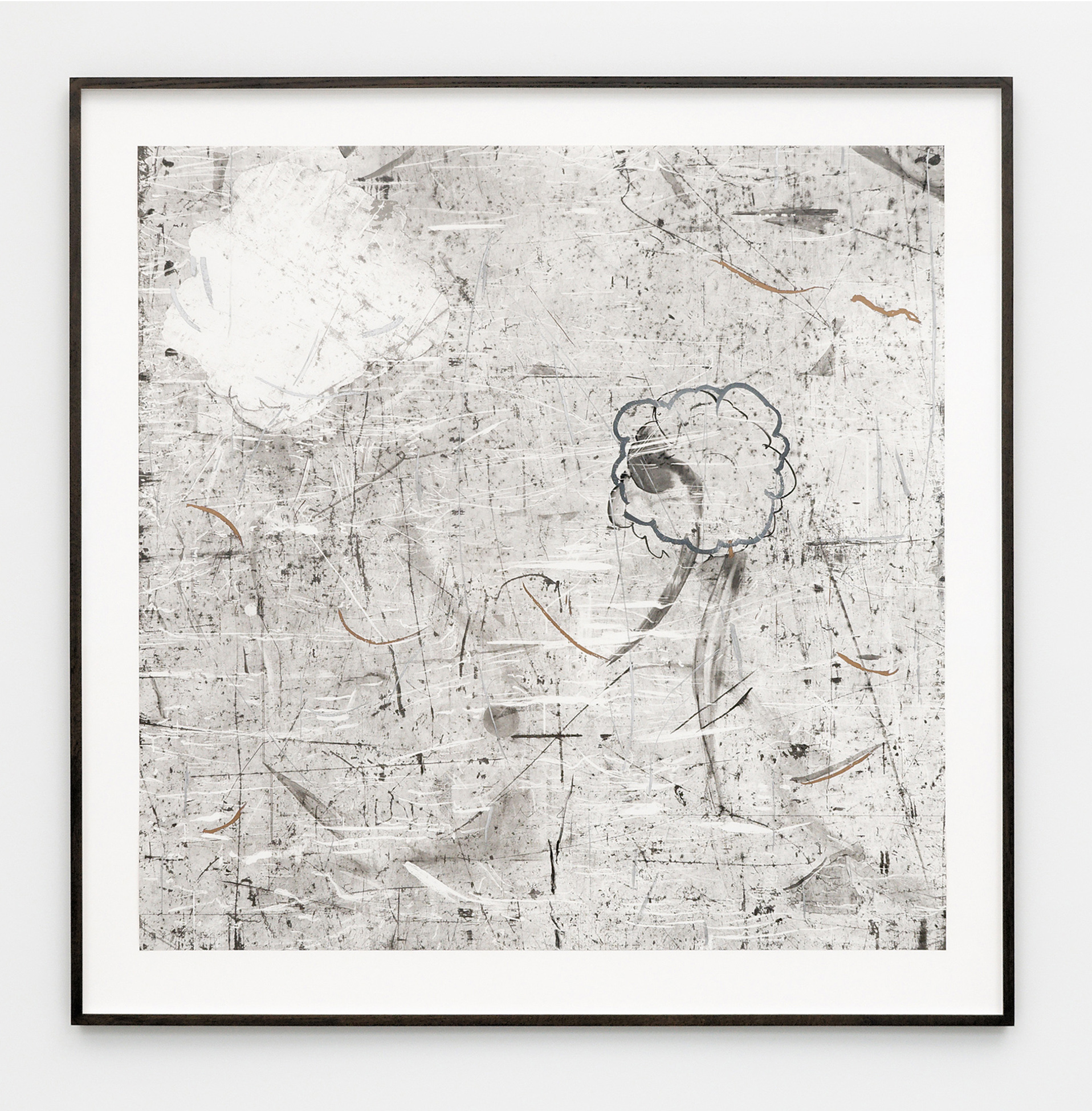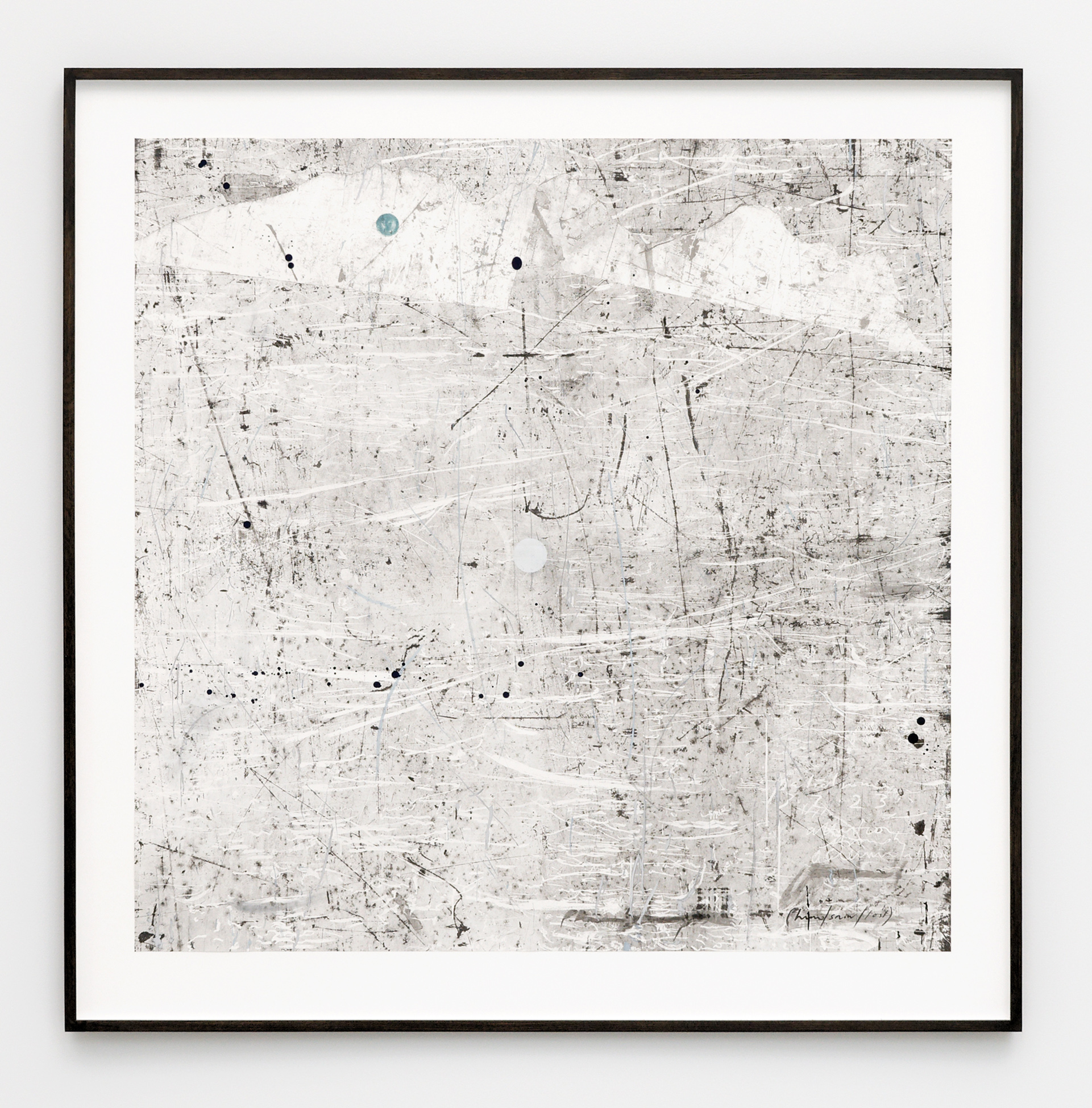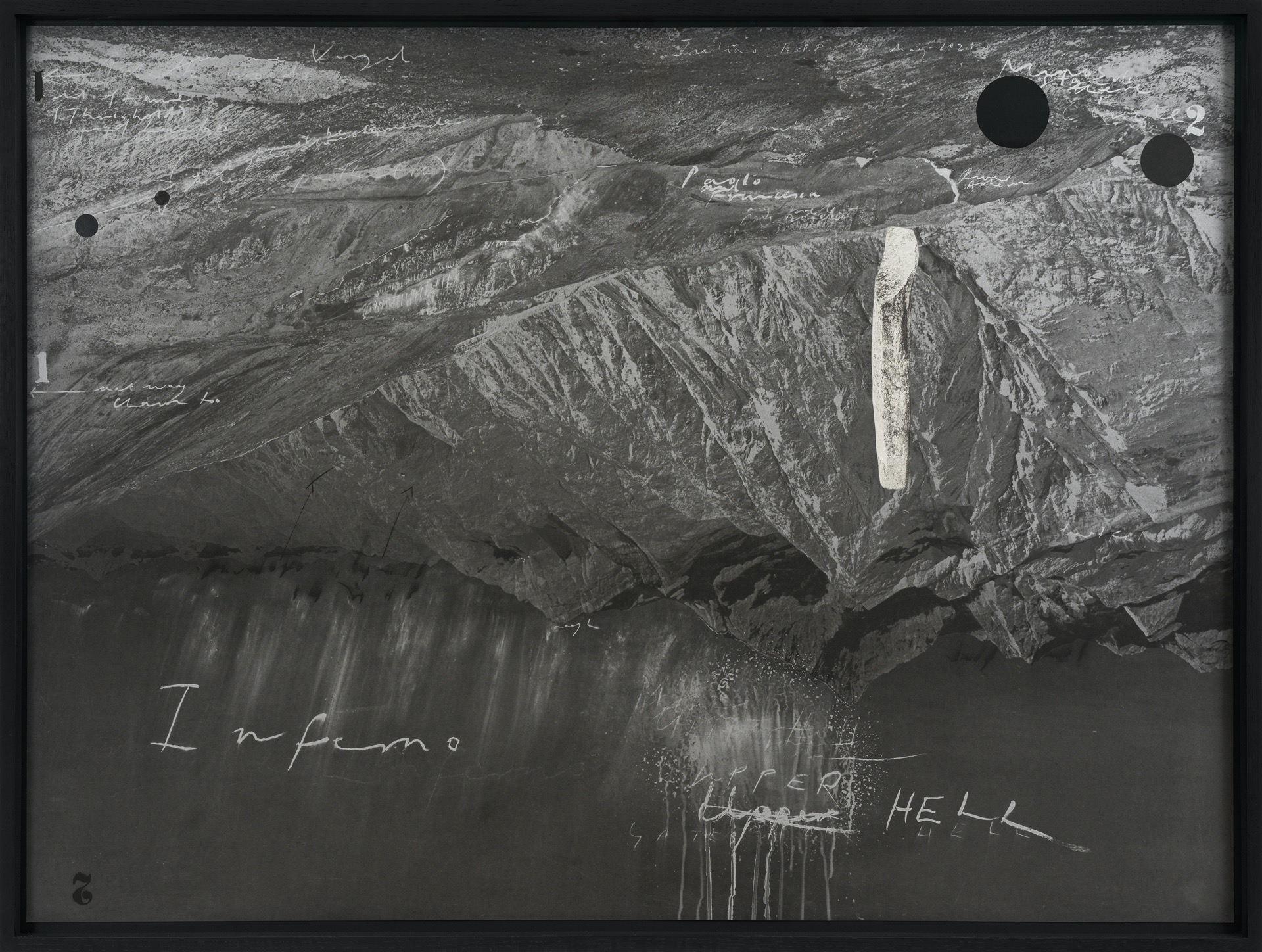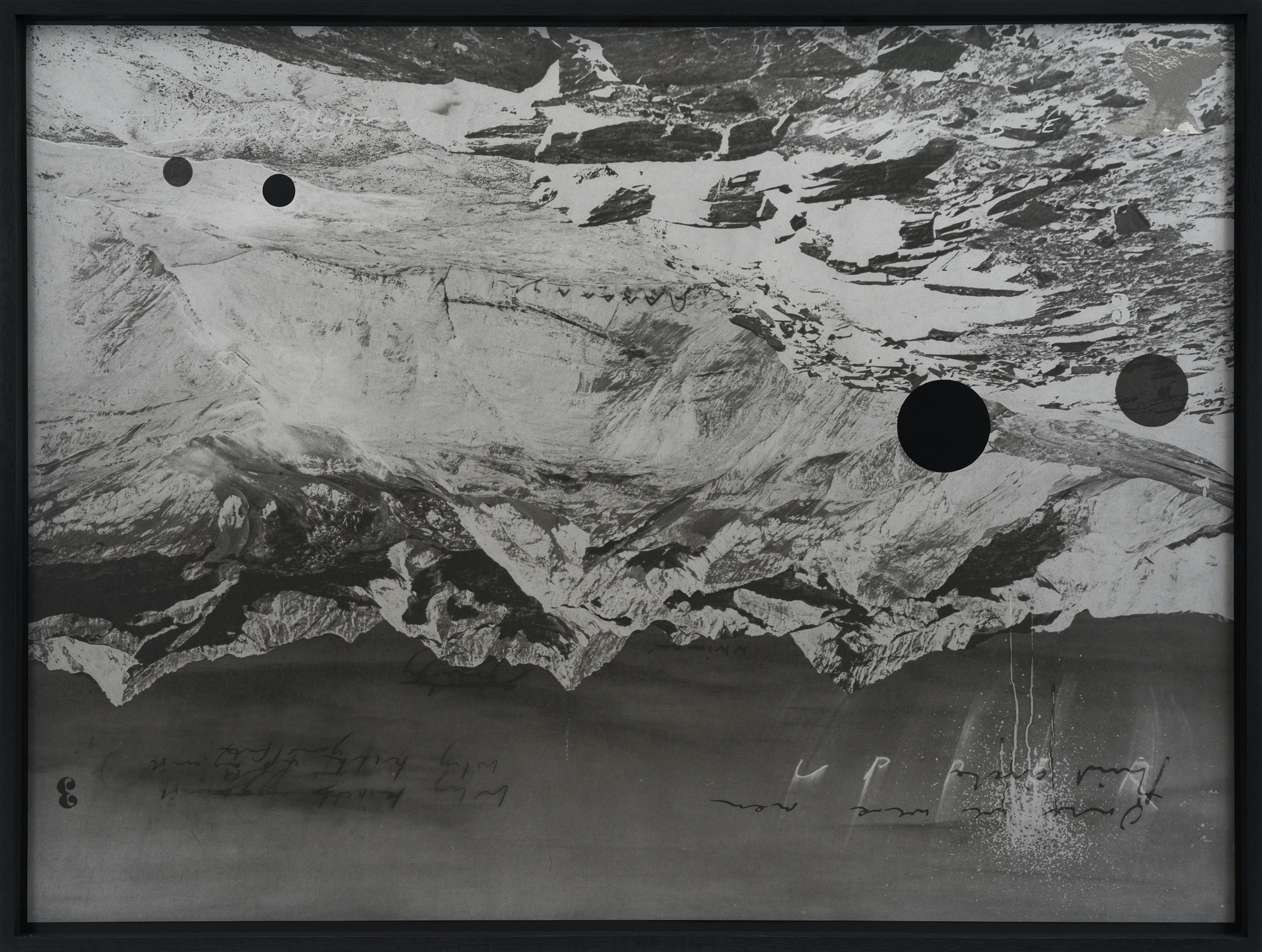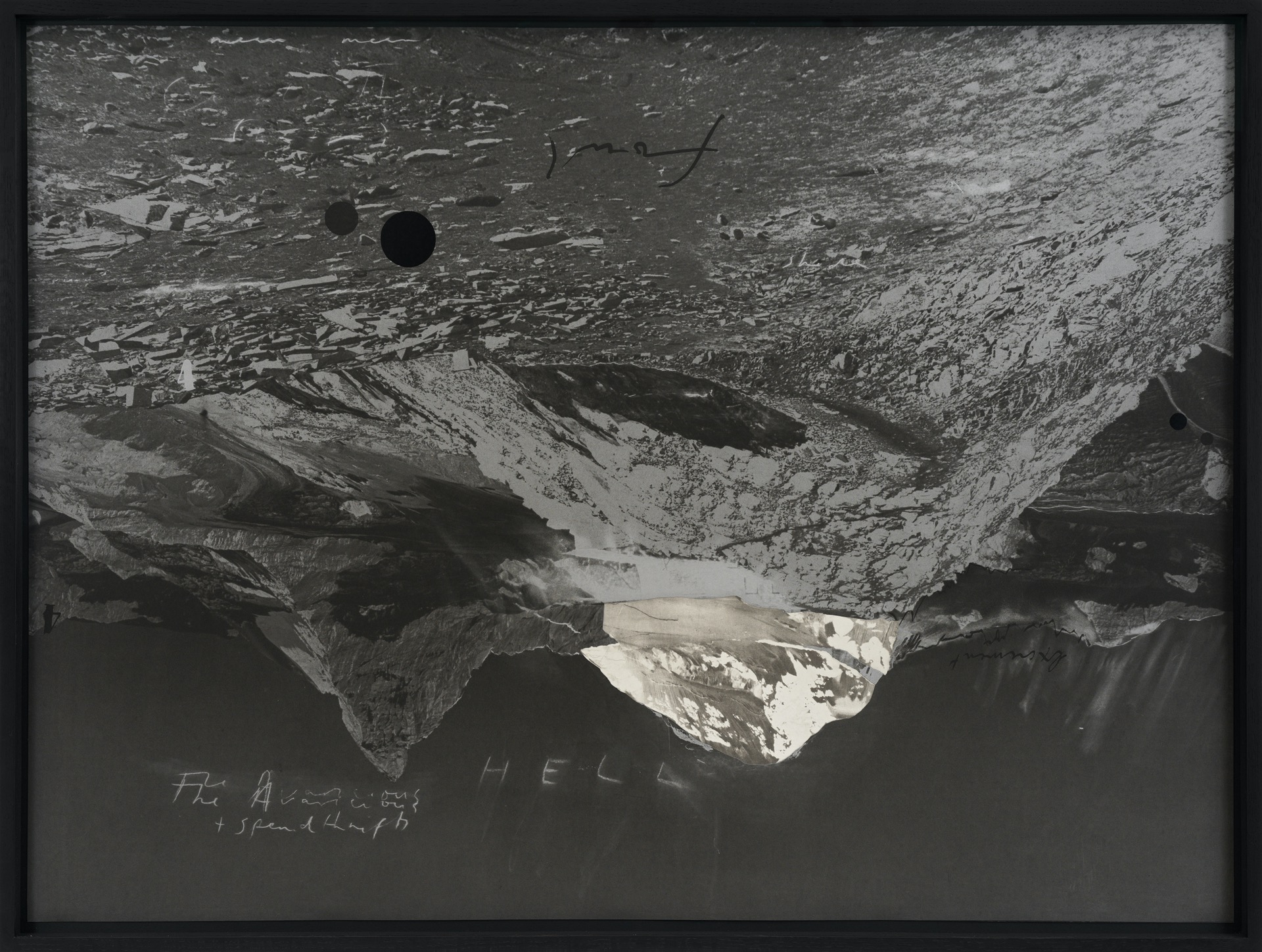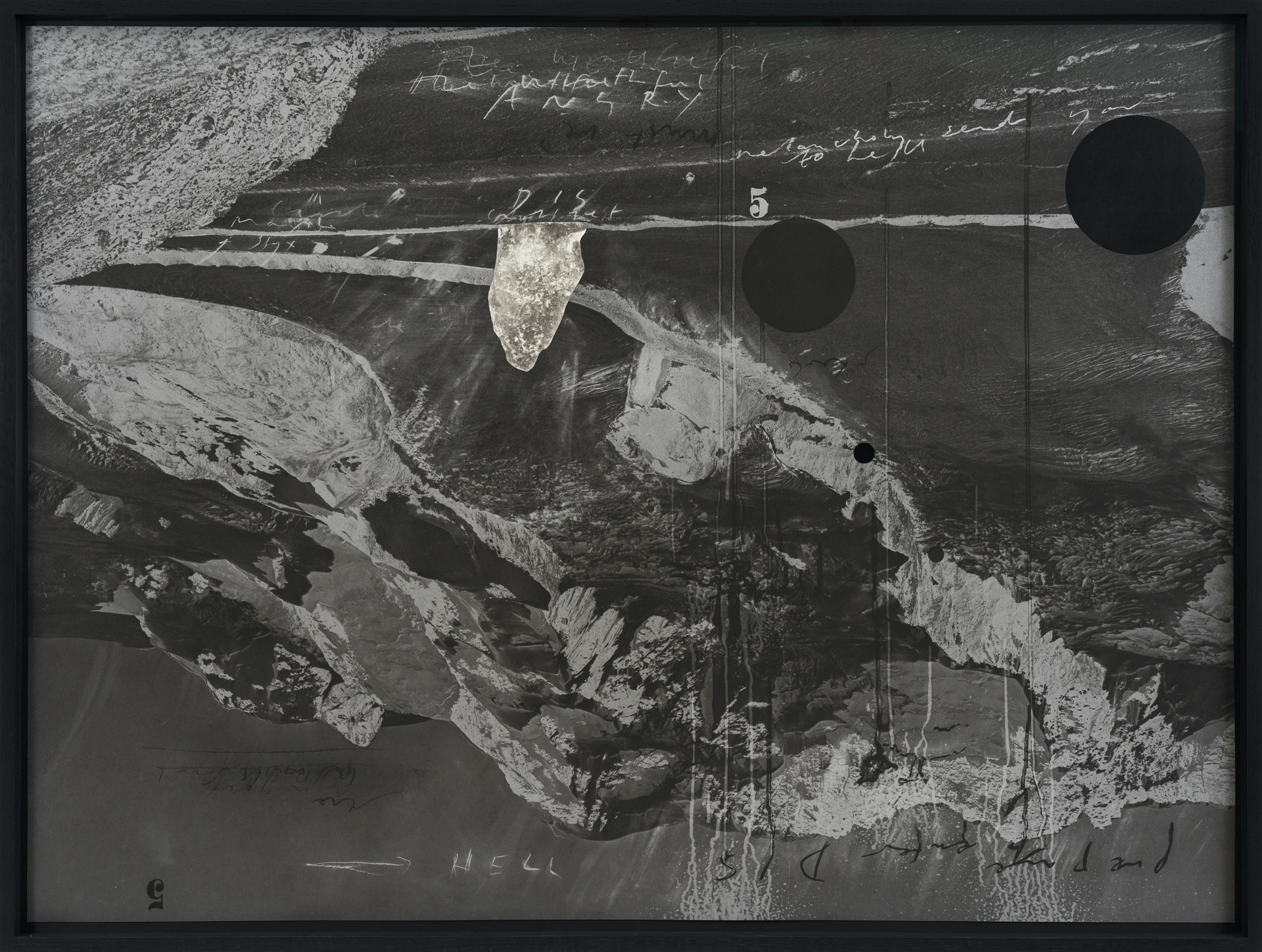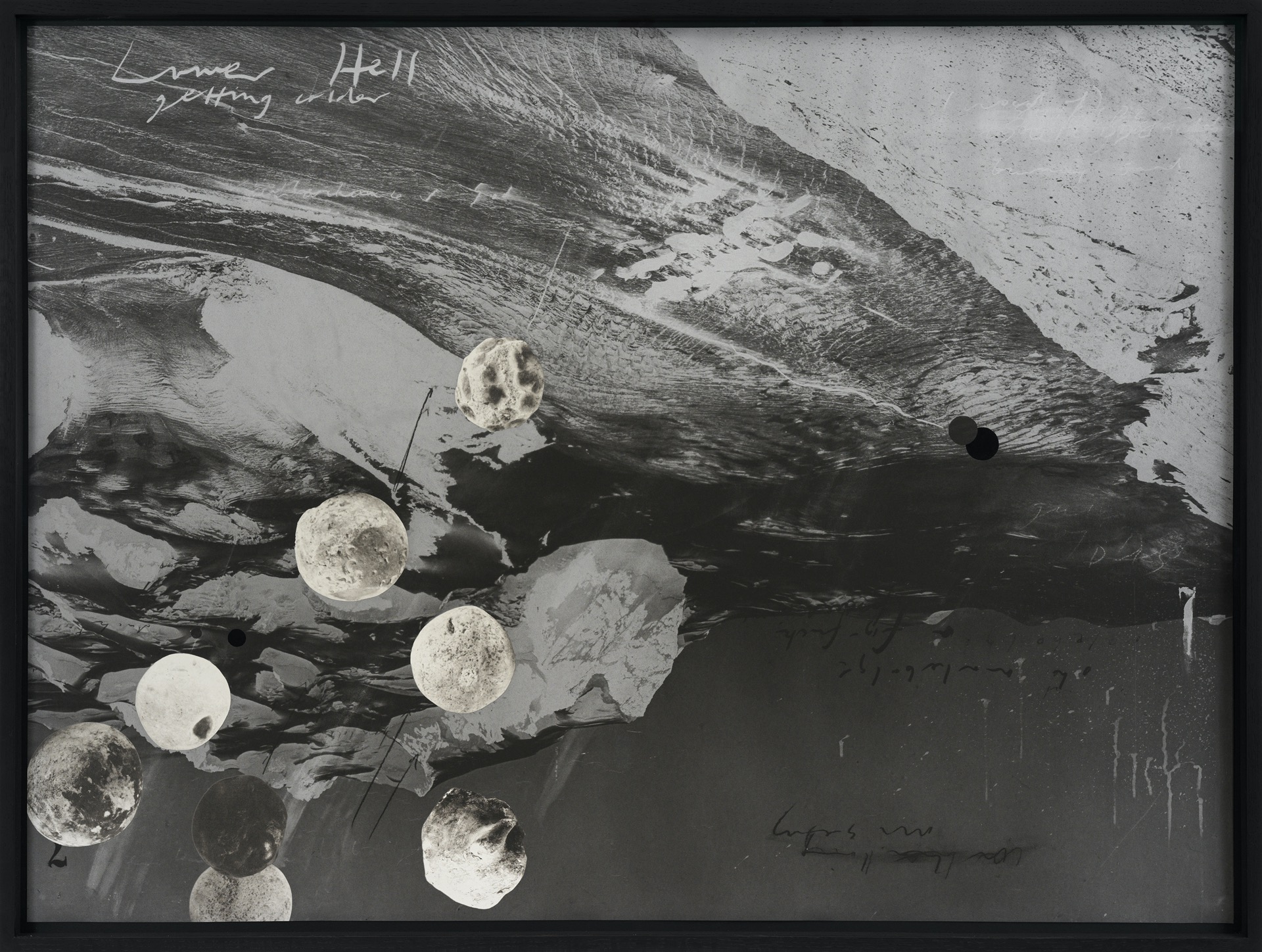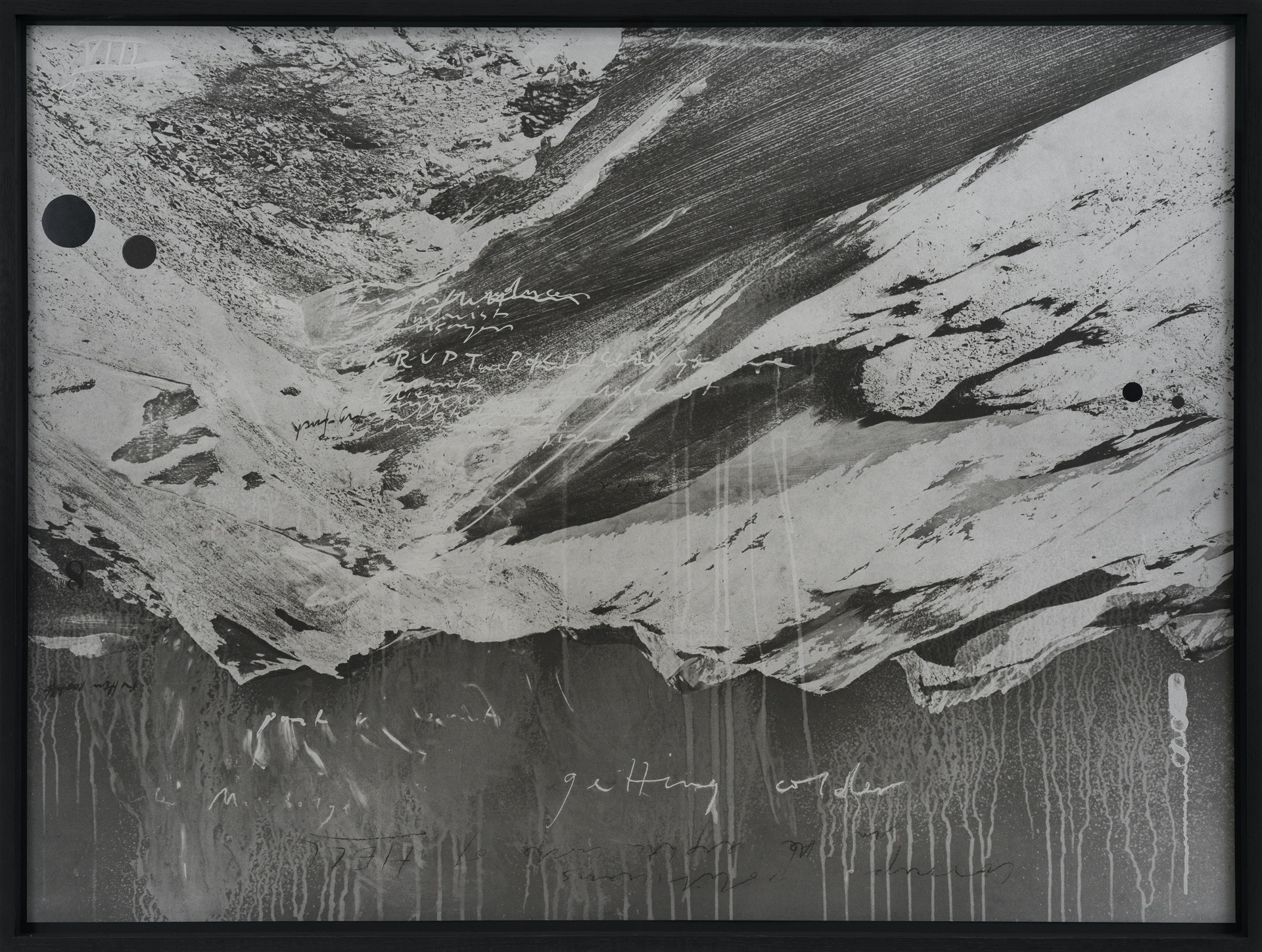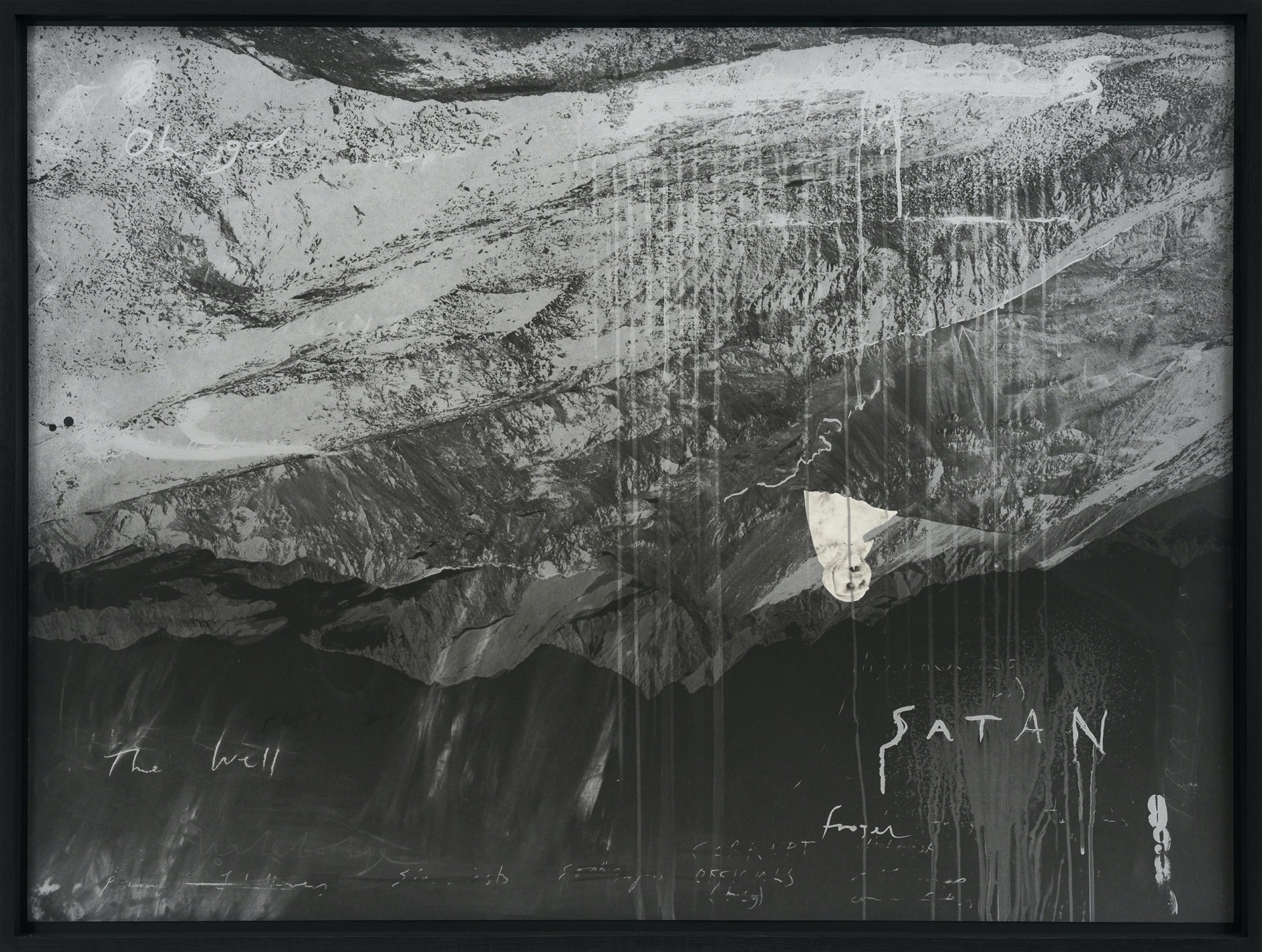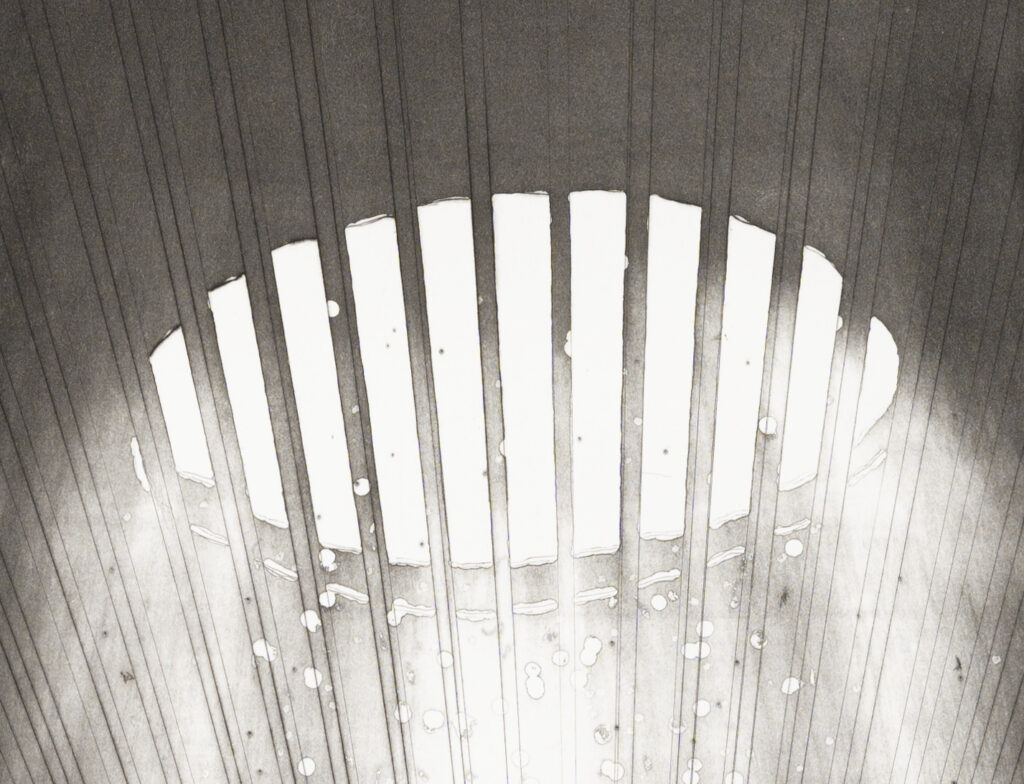An exhibition in which a lifetime of memories can be traced through the details, outtakes and anecdotes.
Tacita Dean | Geography Biography
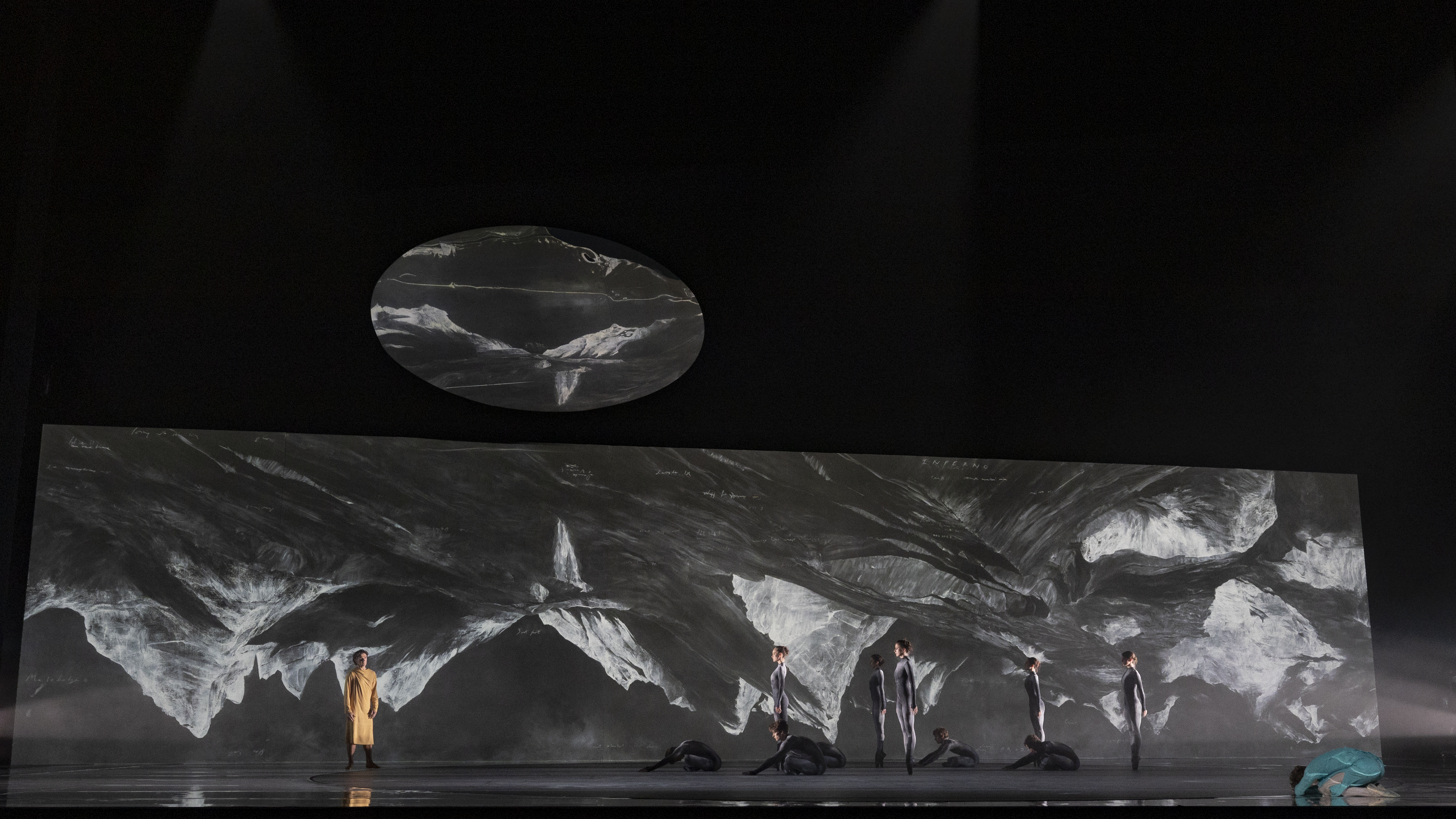
Geography Biography is an accidental self-portrait. It is hard to explain why without giving away the chaos of its manufacture
Tacita Dean
Tacita Dean’s film Geography Biography 2023, commissioned for her exhibition bearing the same name, is an accumulation of a lifetime of memories and experiences. In this work Dean has created a diptych with two portrait format 35 mm films which act as moving collages. The work combines still images from postcards collected from around the world, with excerpts and outtakes of films she has produced, dating back to her student days in the late 1980s. The films are collaged within the still images in small, mostly circular windows in beautiful, serendipitous compositions. The moving images often align in unexpected precision with an assortment of historical postcard landscapes. Seen together, the film presents personal memories within global histories, which Dean calls an ‘accidental self-portrait.’i
The exhibition catalogue focuses on this one key work and is composed entirely of film stills, with accompanying descriptions of the sources from which the films were made. In the texts Dean recounts details of the postcard images, as well as the technical specifications of the films – usually super 8 or 16mm, the person behind the camera, the time, the place, as well as the subject matter. The whole catalogue reads like an annotated family photo album in which Dean describes family and friends, memories of experiences during trips abroad, and even the ideas behind her first films from when she was still an art student. While these anecdotes provide fascinating background stories to the inspiration of this and other works in her oeuvre, they also offer far more information than could otherwise be gleaned from watching the films. Most of the images and film excerpts are details of larger works and at times they are reduced to abstract marks whose meaning and sources could only be deciphered by the artist. Dean loads the films with dense layers of information, with personal sources and meanings that are all but impenetrable to the exhibition viewer. Yet the films remain compelling. There is an overall warm, nostalgic aesthetic that unifies the disparate elements, and the absence of complete narratives enables the viewers to connect with the work on their own terms, with their own memories and associations.
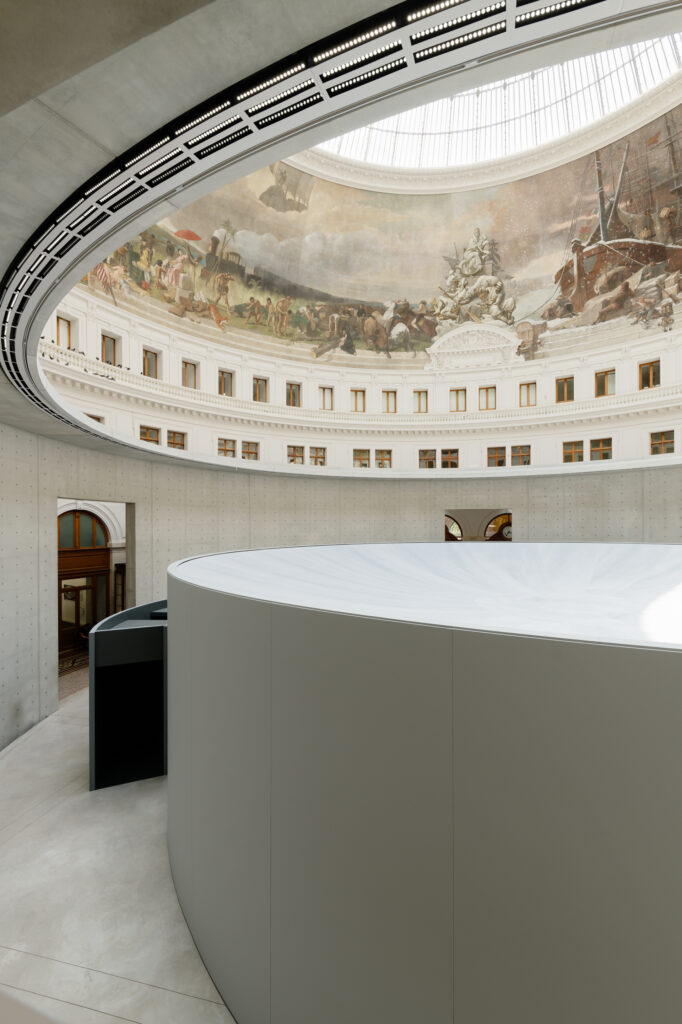
The film was shown as part of the exhibition Tacita Dean, Geography Biography at the Bourse de Commerce – Pinault Collection, Paris (24 May – 11 September 2023). This grand space, formerly the city’s stock exchange, was recently transformed by Japanese architect Tadao Ando to exhibit contemporary art. The building retains its historical framework, including a vast panoramic mural from 1889 that surrounds the central glass dome. The mural depicts the development of modernity in France through trade and commerce with countries around the world. It has a dominating presence in the space which affected Dean; she described it as the ‘violence of imperial extraction as triumphant acquisition in all four compass points of the world.’ii Her response as an artist from an ‘imperialist nation’ was to draw on the images from around the world that she has collected over the years and recontextualize them within her own personal narrative.
To exhibit her film, an enclosed circular pavilion was constructed beneath the mural, featuring a central platform on which two 35mm projectors were mounted. The platform slowly rotated, enabling the films to be projected around the interior walls. Visitors needed to follow the films as they slowly moved around the space, sometimes obscuring the views of other visitors as they relocated to better vantage points of the perpetually moving images. The film and its installation seem to mimic the process of memory itself – fleeting memories are montaged together, and our subjective perspective of them is sometimes obstructed or distracted by present circumstances. It will be interesting to see how the work is exhibited at the Museum of Contemporary Art in Sydney when it is shown there in December, without the all-pervading presence of the panoramic mural overhead.
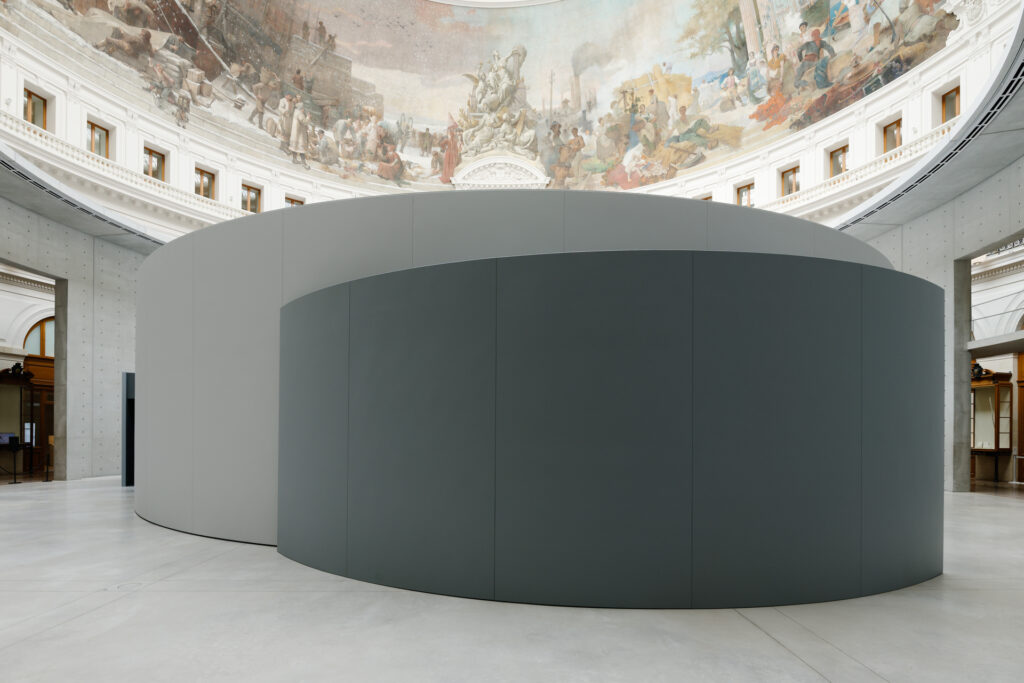
At the beginning of the catalogue, Tacita Dean dedicates the exhibition to two lost friends – the first, a LA book dealer Dagny Janss Corcoran, who died unexpectedly. The second, actor Julian Sands, who became lost whilst trekking in the mountains outside of Los Angeles, and never returned. Dean would light a candle in her studio each day of his absence in the hope that he would be found. These occurrences were the backdrop to the gestation phase and development process of the series of four large prints titled Telomere 1-4 that also featured in the exhibition.
Dean found the word ‘telomere,’ which are the sections at the end of a chromosome, when she searched “attrition through accumulation” on the internet. Telomeres get shorter with each cell division and as we age. Her largely abstract, gestural prints, Telomere 1-4, consist of many layers of accumulated marks that are visual and physical markers of the passage of time. The prints were developed over the course of more than two years with BORCH Editions. Tacita Dean visited the workshop in Copenhagen several times and was in regular communication about the prints’ development from her Berlin and Los Angeles studios.
The project began with Dean sending her ideas, which were jotted down in the form of sketches, photographs and found images, all collaged together. They provided Niels Borch Jensen and master printer Tom Jennions with a starting point from which they could suggest ideas about possible printing techniques to use, which would best capture the look and feel of these initial sketches. From there, numerous iterations and proofs were made to test different mark making, printing methods and colour combinations.

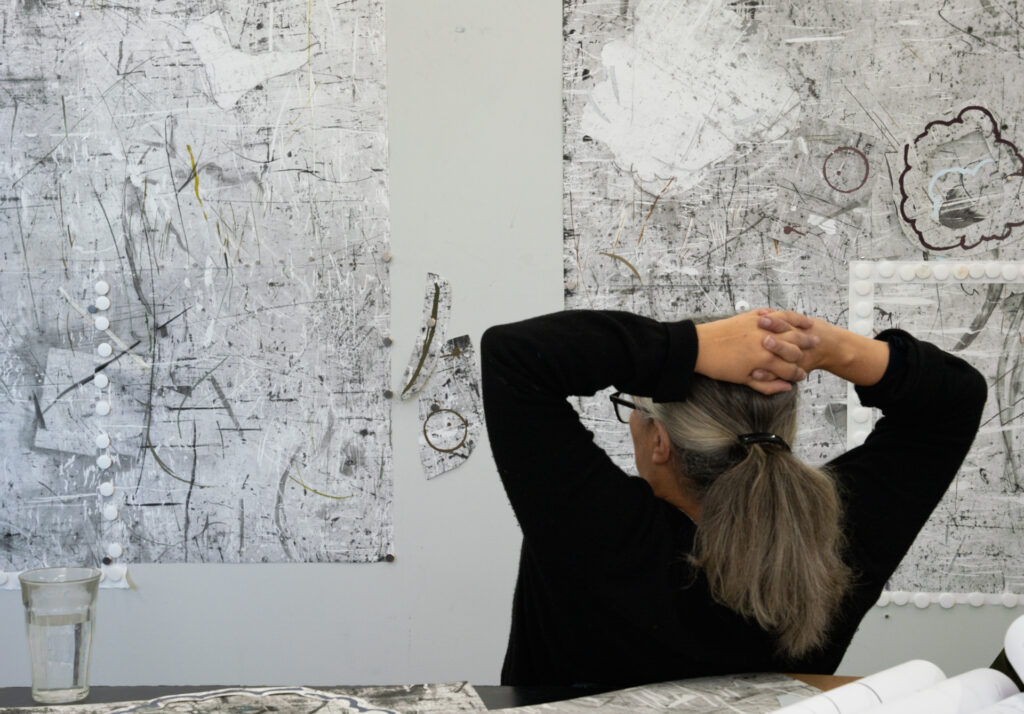
Dean describes Telomere 1–4 as a ‘found mark project,’ in which she traced, copied, and accumulated random marks over an extended period of time. She was perhaps searching for a way to communicate layers of lived experience and the natural attrition that can accompany that experience. In the end, the base layer for each print became a photogravure image of a metal ramp found in the artist’s gallery in Paris. It had an aged patina of scratches and indentations from years of use, and provided the perfect random marks that Dean was looking for. She then layered these marks with hand-drawn gestural lines and personal iconography, which were reproduced on a second plate utilising photogravure and direct gravure. The final layer of colour motifs and marks was created using screen printing and the glossy ink appears to float on the surface, in contrast to the embedded ink of the gravure layers. The marks accumulate throughout the series of four, so that the overall compositions intensify and become progressively more abstract.

Thomas Castenschiold Dehlholm and Tom Jennions screenprinting one of the Telomere series.
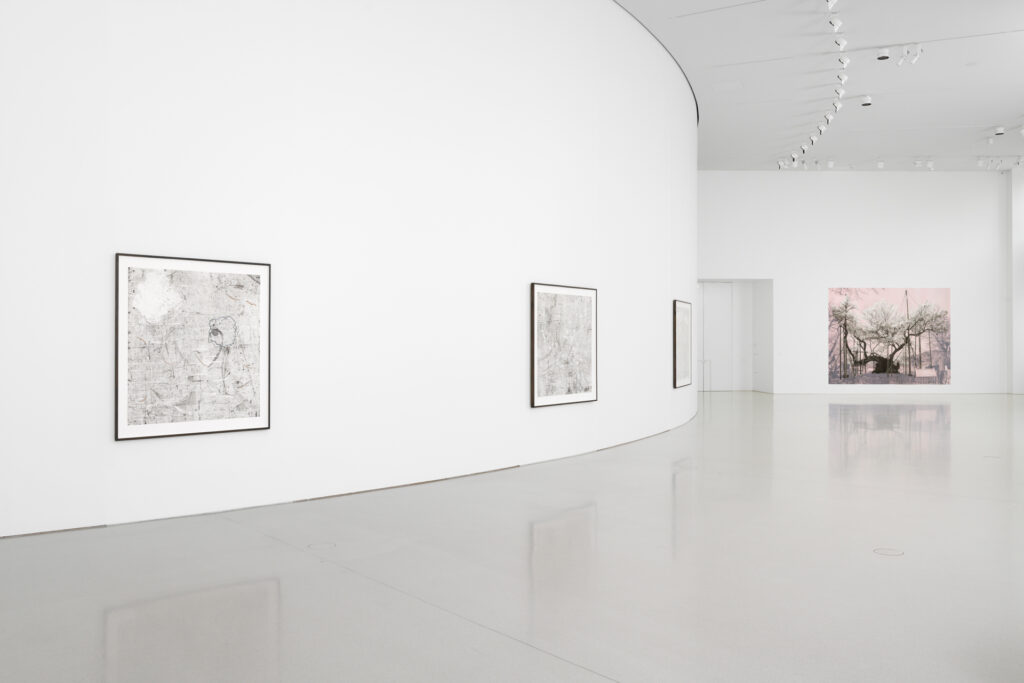
Launching at the Palais Garnier in Paris at the same time as the exhibition, was the ballet The Dante Project, for which Tacita Dean was commissioned to create the designs and costumes. The ballet was inspired by Dante Alighieri’s Divine Comedy (1307–1321) with music by Thomas Adès and choreography by Wayne MacGregor and marked the 700th anniversary of the poet’s death. Dean’s white on black drawing of an inverted mountain range was the striking backdrop to the performance. She also created a related ten-metre print, made in eight parts, titled Inferno 2021, which depicts the mountain range where Dante and Virgil descend into Hell. Dean’s found source material for both works was a series of nineteenth century photographs of a mountainous panorama.
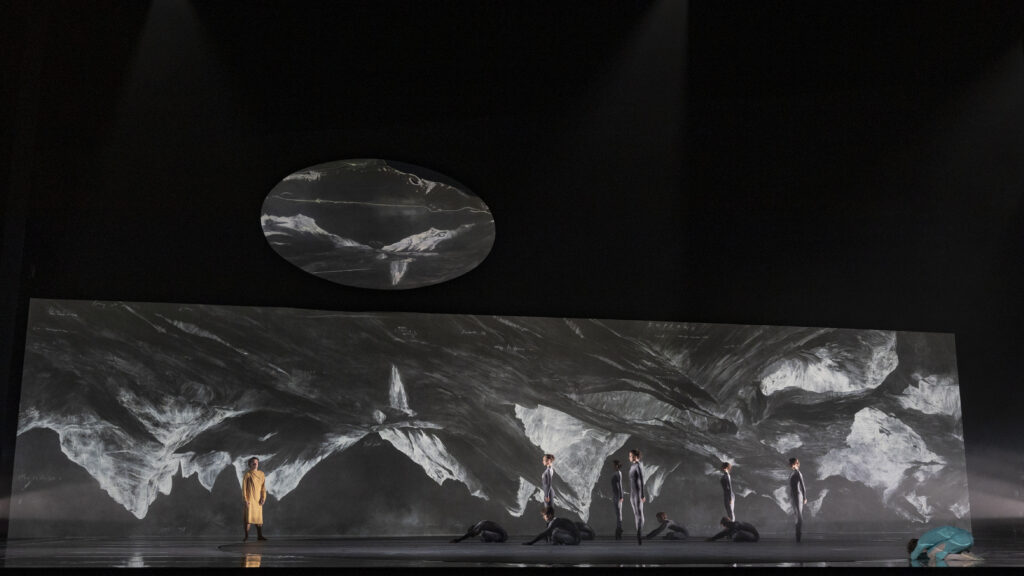

The exhibition at Bourse de Commerce featured another print series of a completely different nature – a set of monotypes on found plain postcards titled Summer Memory 2023. These works are celebratory in their brightly coloured abstraction and draw the viewer in to enjoy their spontaneity on an intimate scale.
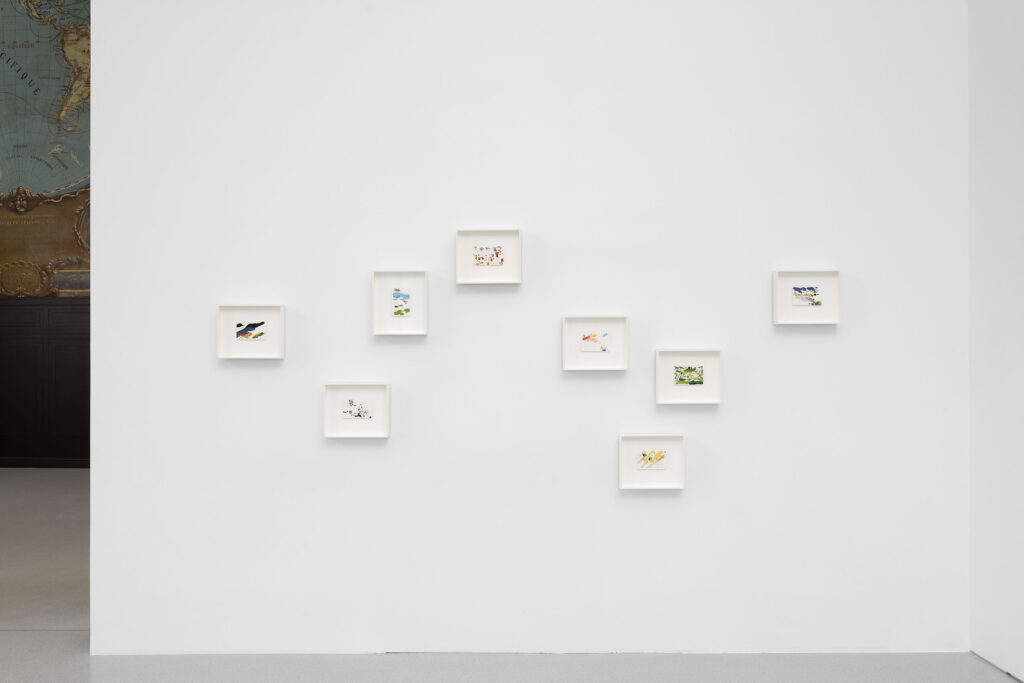

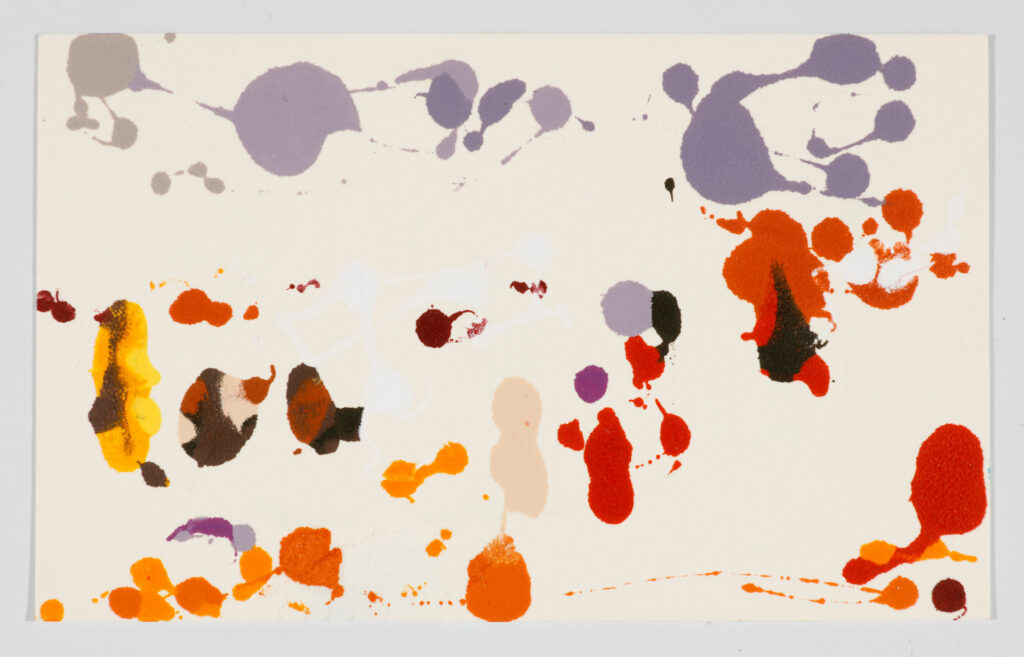
In contrast, the slow majesty of a huge cherry blossom tree in all its splendour fills the end wall of the gallery. At nearly 2000 years old, Sakura (Jindai I) has lived through an almost unimaginable passage of history in Japan. Its age and fragility are evident in its grand scale and the myriad of wooden struts that support its branches. These struts are a clear attempt to counter the weight of growth, to prevent natural attrition. In Dean’s work, everything surrounding the tree is shaded a dusky pink and a closer inspection reveals that the photograph has been hand-coloured with pencil. This painstaking halo of pink subdues the noise of the tree’s contemporary context, setting it almost outside of time, whilst highlighting the beauty of the transient period in which the blossoms are in full bloom.

The theme of transience is continued in the exhibition in the seven-metre chalk drawing, The Wreck of Hope 2022, which depicts an enormous iceberg. It is easy to get lost in the detail of this work and appreciate the sheer weight of ice that seems to emerge from the black background. It references Caspar David Friedrich’s sublime painting with the same title, also known as The Sea of Ice. Dean’s iceberg towers over the viewer and yet the inherent vulnerability of a chalk drawing on blackboard is palpable, and clearly analogous to the climate change reality we currently face.
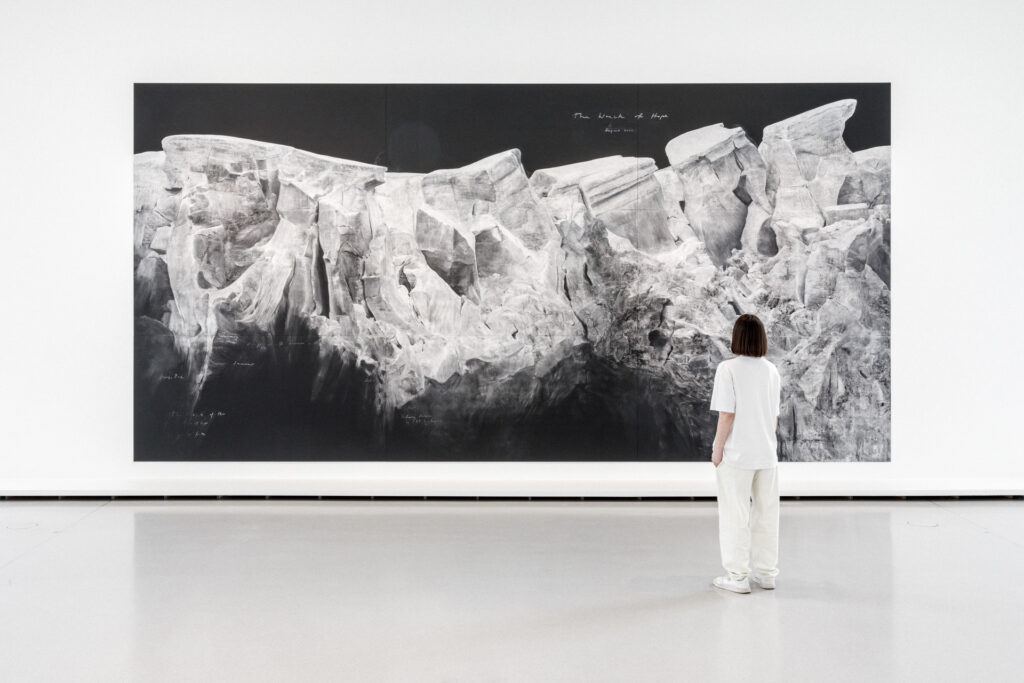

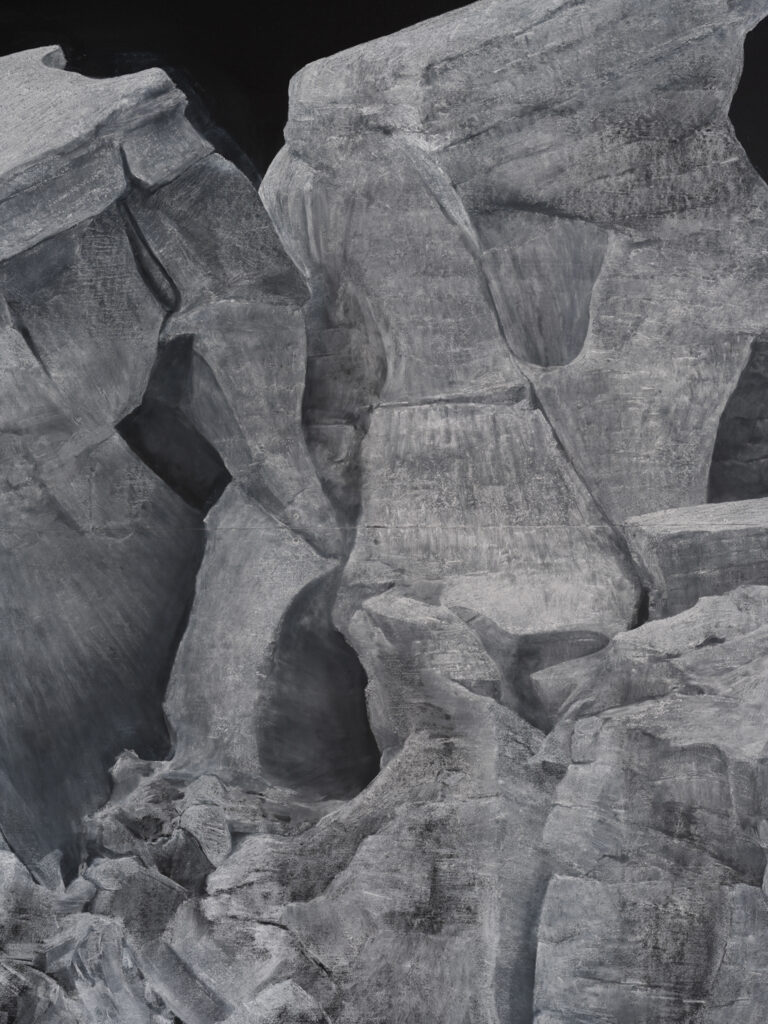
Dean describes why and when she first began to draw with chalk on blackboard (as an art student back in 1991), in the backstory of one of the super 8 films in Geography Biography. In this exhibition the evolution of Tacita Dean’s practice can be traced through the details, the outtakes and the anecdotes.
Throughout her practice, Tacita Dean has consistently maintained a preference for analogue techniques; for 35 mm films, for photogravure prints, for drawing in chalk. The materiality of these techniques gives the works a tangible connection to the past, as well as sense of authenticity and a richness that is difficult to attain otherwise. There is a poignant connection between the fragility of a 35 mm film winding through a projector, or a drawing on blackboard, with the fragility of the memories and nature which they depict, and ultimately the fragility of life itself. In gathering the discarded film excerpts, the long-forgotten postcards, and the marks accumulated over years of use, Geography Biography becomes a self-reflective exhibition which, as Dean says, ‘is the material testament of my own life lived.’iii
Kirrily Hammond
Excerpt from Memory Itself, Imprint Magazine, Print Council of Australia, December 2023
i Tacita Dean, Geography Biography catalogue, Bourse de Commerce, Paris and Museum of Contemporary Art, Sydney, 2023. ii Op. Cit. iii Op. Cit.
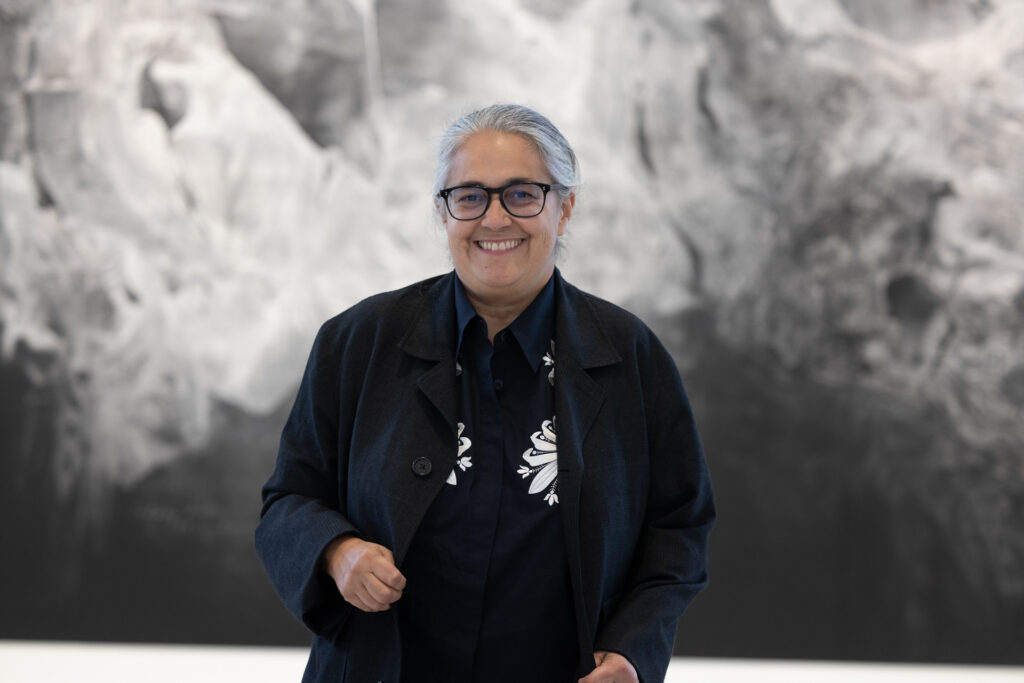
About Tacita Dean
Printmaking has become an essential part of Tacita Dean’s artistic practice since she first collaborated with Niels Borch Jensen’s Copenhagen printmaking studio more than 20 years ago.
Partly based on her films, partly created from found material like postcards or vintage photographs, she employs the printing techniques of photogravure, directgravure, offset lithography and screenprinting to transfer her poetic visual narratives into the realm of printmaking.
Tacita Dean, born 1965 in Canterbury, England lives and works in Berlin, London, and Los Angeles. She has been regularly collaborating with BORCH Editions since 2001.
Learn more about Tacita Dean

